The Turkey Grand Slam, particularly the single-season slam, is the crown jewel of turkey hunting. Completing it will take you to vastly different landscapes as you trek cross-country to find the four subspecies of turkeys that complete your slam: Osceola, Eastern, Rio Grande, and Merriam’s turkey. A lifetime achievement worthy of congratulations, but many folks heighten that challenge by attempting to harvest all four subspecies in a single spring—the Single-Season Grand Slam.
(There are also Royal Slams, World Slams, and more.)
Turkey Slams: The Four Subspecies of Wild Turkey
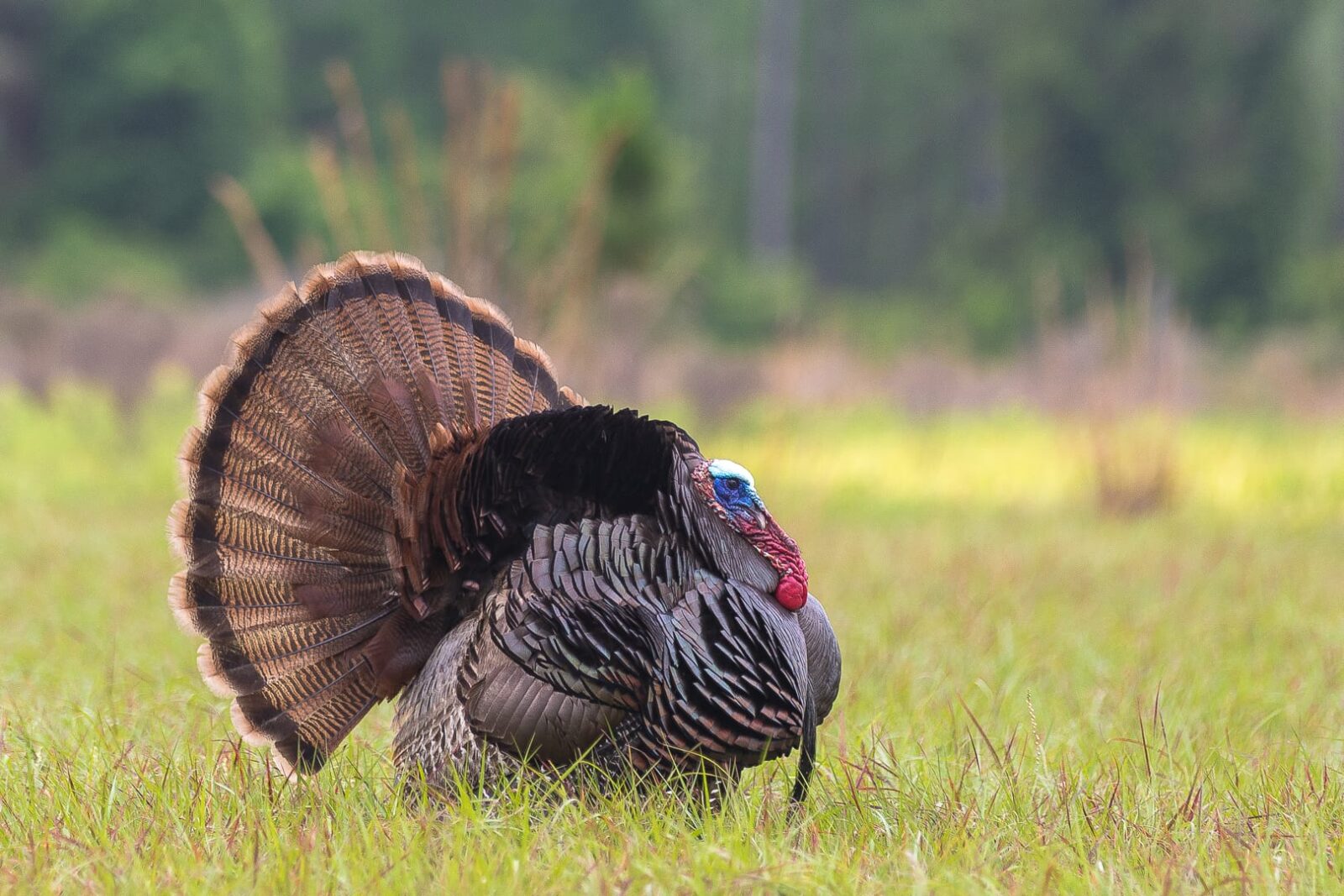
Osceola Turkey
The Osceola wild turkey is objectively the most difficult of the four subspecies to hunt, let alone harvest, due to a lack of public access opportunity and their extremely small habitat range. Osceolas only inhabit the southern half of Florida. Given this, many of the hunting opportunities in Florida occur on private land and in turn have fairly significant costs related to hiring an outfitter. That said, public land hunting opportunities for these birds exist, but are without question some of the hardest public land turkey hunts out there.
Osceolas are on average quite a bit smaller than the three other subspecies, but look similar to their Eastern cousins save for much darker wings. They are the most aggressive subspecies and often make for thrilling hunts.
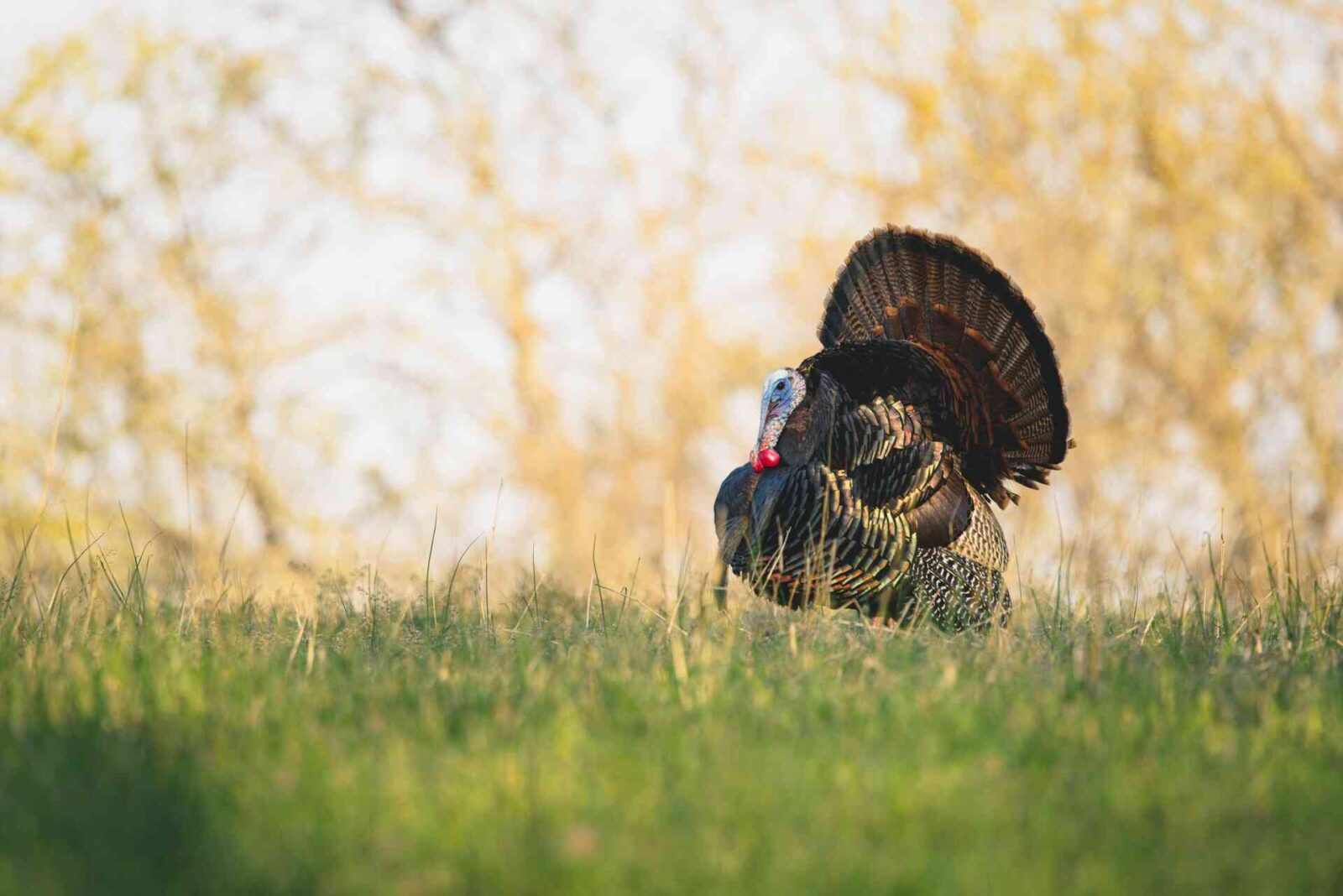
Eastern Turkey
The Eastern turkey is the most populous and widest-ranging of the subspecies, found from Maine to North Florida to Louisiana, and all the way to Minnesota and beyond into Canada. On average, it’s the largest of the four subspecies. Easterns have the most thunderous gobbles, and are both the most wary and most hunted turkey. Tons of both public and private land opportunities exist to hunt an Eastern. Pick a state and get to researching your ideal hunt using onX for Desktop.
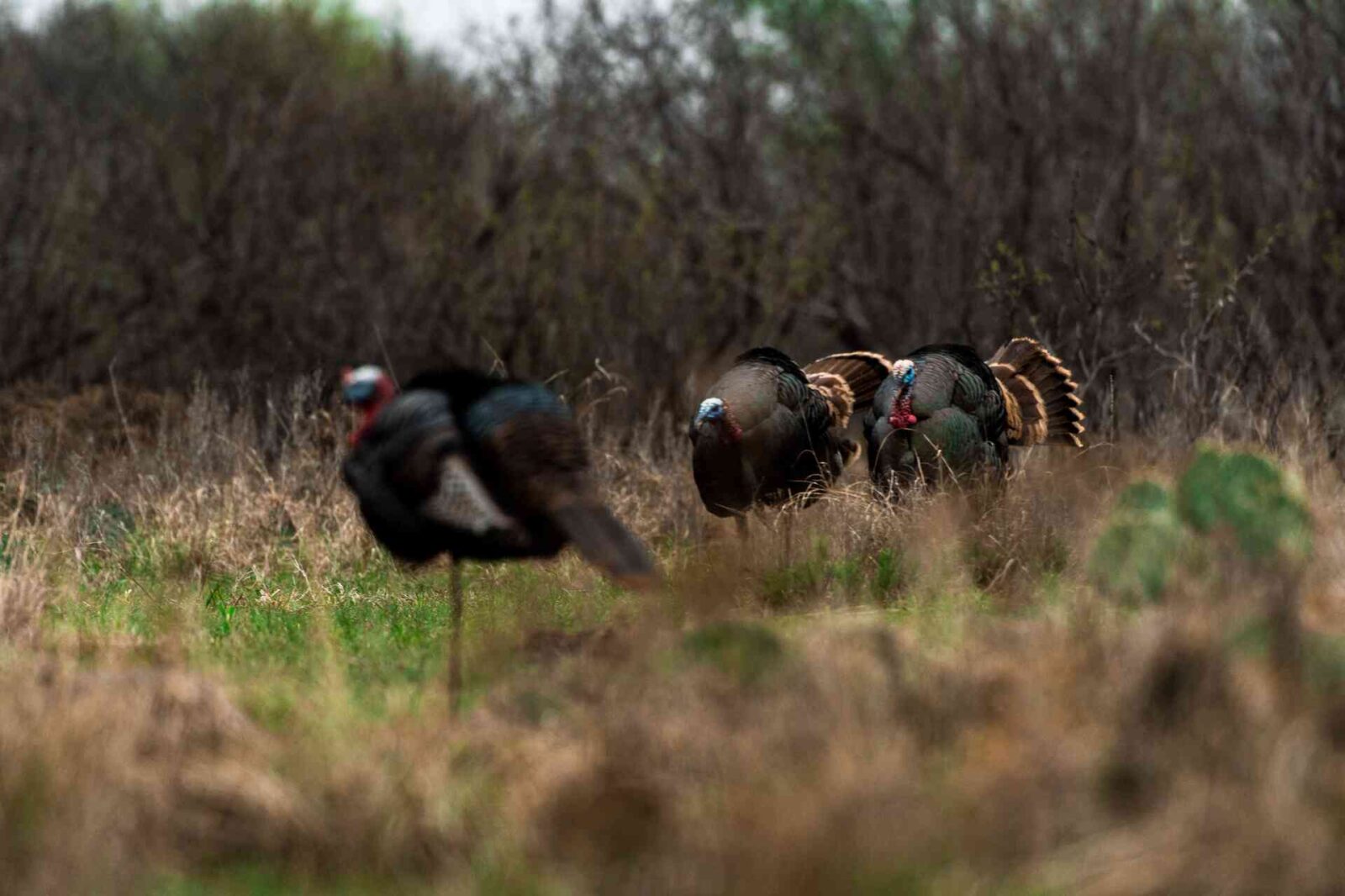
Rio Grande Turkey
Rios, as they’re known, inhabit the southern flyover states such as Texas, Kansas, and Oklahoma, as well as much of California. Rios are one of the easier subspecies to coax into shotgun range, but will no doubt provide challenges. Finding suitable habitat with hunting access can be challenging as these birds typically rely heavily on river/creek bottoms, one of the few places in these landscapes that harbor large trees suitable for roost locations. If you can find creek bottoms with surrounding agricultural food sources, you will be on birds.
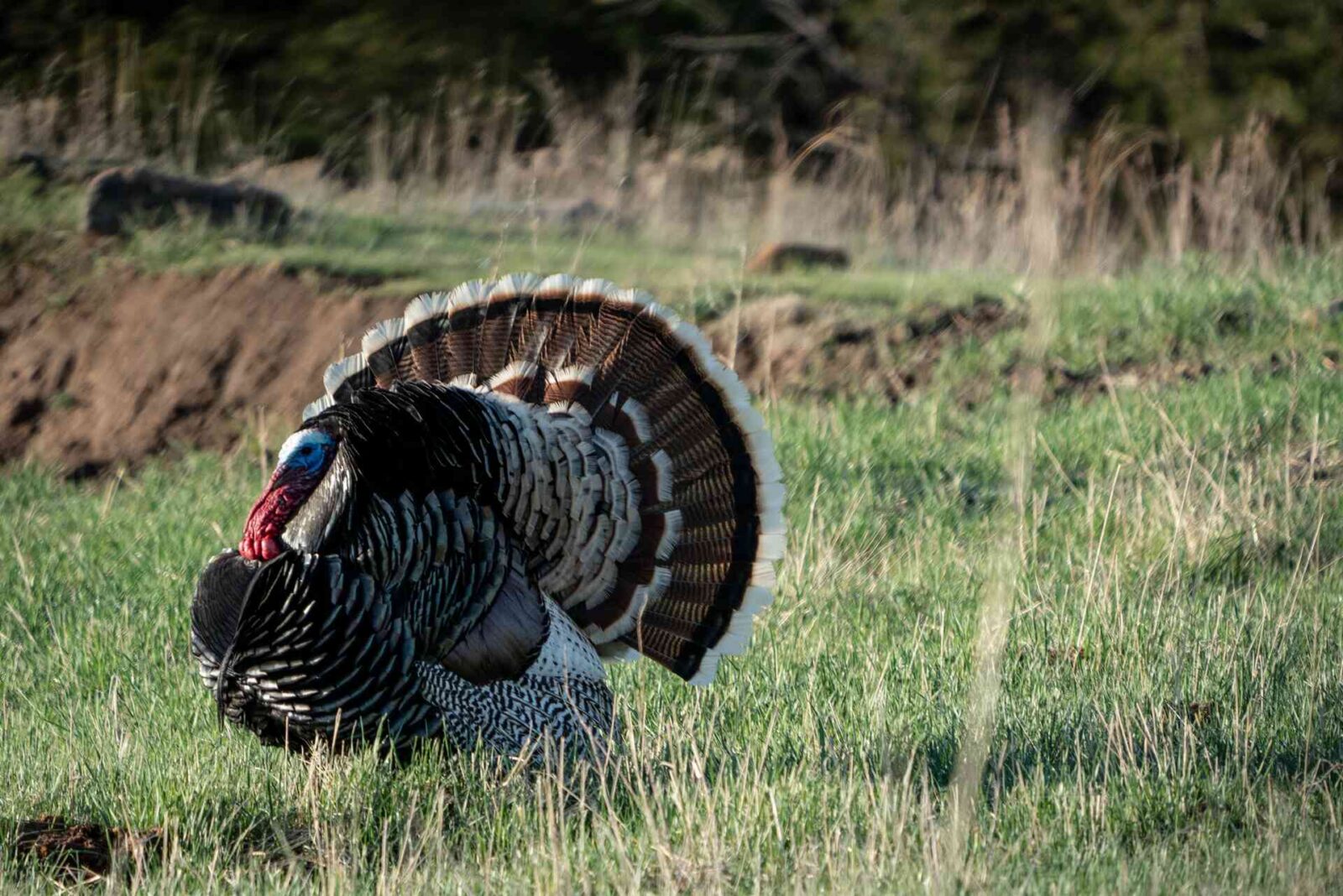
Merriam’s Turkey
Merriam’s turkeys are the most differentiated of the subspecies with their creamy white-tipped feathers filled with hues of pink throughout their tail fan. From central Nebraska to South Dakota, and west throughout Wyoming and Montana, you will find these birds. Known for their frequent gobbles, as compared to all other subspecies, these birds are a ton of fun to hunt as you often are in the game on gobbling birds. They, of course, present their own challenges. Not being overly aggressive, they tend to be less committed to calling and often live in steep, varied, mountainous terrain. They can be quite nomadic, making them downright difficult to catch up to.
Planning Your Turkey Grand Slam
When planning your turkey grand slam, the first question to answer is: Are you looking to work on your Grand Slam over a number of years or do you want to achieve a Single Season Grand Slam? A Single Season Grand Slam is far more costly and logistically challenging, but offers a truly unique achievement.
Planning a Do-It-Yourself (DIY) Turkey Grand Slam Hunt
For hunters aiming to undertake a DIY hunt, the Eastern, Merriam’s, and Rio Grande subspecies present feasible opportunities:
- Eastern Wild Turkey: Predominantly found in states east of the Mississippi River, including the Appalachian region, these turkeys inhabit hardwood and mixed forests. States like Pennsylvania, Kentucky, and Mississippi offer extensive public lands suitable for DIY hunts.
- Merriam’s Wild Turkey: Inhabiting the mountainous regions of the western United States, Merriam’s turkeys are prevalent in states such as Colorado, South Dakota, and Wyoming. Their habitats include ponderosa pine forests and open terrains, providing ample public hunting grounds.
- Rio Grande Wild Turkey: These turkeys are commonly found in the southern Great Plains, including Texas, Oklahoma, and Kansas. They favor riparian areas and scrublands, with numerous public hunting areas available.
Challenges of Hunting the Osceola Subspecies
The Osceola turkey, exclusive to Florida, poses unique challenges due to limited DIY opportunities:
- Public Land Hunting: While there are public lands open for hunting Osceola turkeys, these areas are highly competitive and demanding. Hunters should prepare for rigorous conditions and heightened competition.
- Guided Hunts: Given the scarcity of accessible public lands, hiring an outfitter may be a more practical approach to securing an Osceola turkey. This option, though more costly, can increase the likelihood of a successful hunt.
Turkey Regulations and Season Dates
Each state has specific regulations and season dates for turkey hunting:
- Licensing: Some states offer over-the-counter tags, while others require applications through lotteries. It’s crucial to research and understand the licensing process for each state you plan to hunt in. onX Elite Members gain free access to Hunt Reminder, a service that will help you discover and ensure you never miss the opportunity to apply for turkey hunts across 33 different states. These include special draw wildlife management area hunts, states that require turkey applications to draw a tag, and other nuances that can be otherwise difficult to understand.
- Season Timing: Southern states may have earlier seasons starting in March, whereas northern states might extend into May. Aligning your hunts with these dates can facilitate a smoother Grand Slam pursuit.
Networking and Community Engagement
Engaging with the hunting community can provide valuable insights and support:
- Local Chapters: Joining local chapters of organizations like the National Wild Turkey Federation (NWTF) can connect you with experienced hunters and conservationists.
- Forums and Social Media: Participating in online forums and social media groups dedicated to turkey hunting can offer tips, share experiences, and provide moral support.
My Single Season Turkey Grand Slam
Frankly, I never dreamed I’d achieve a Single Season Grand Slam, but I was fortunate enough to have the pieces fall into place. Here’s how it went down.
March 6, Florida Osceola
Five days prior, my good buddy and onX Ambassador Phillip Culpepper called me well past 10 p.m.: “Jared, short notice, brother, but some family stuff came up for a guy I was set to hunt an Osceola with on the south opener, can you get here?” And just like that, five days later I was up at 5:30 a.m. headed into some entirely new country to hunt an Osceola. Phillip had roosted some birds the night before, so we had high hopes off the roost. We kicked off the Realtree Spring Thunder turkey tour with this hunt, so watch it go down here:
April 24, Kansas Rios
It was day four of a five-day hunt with my dad in Kansas. Up to this point, we had three separate occasions where birds we were actively making plays on/working were shot (or shot at) by other groups of hunters—public land at its finest! Admittedly, I also swung and missed on our first morning attempting more bushwhacking than was apparently doable. Finally, though, we found a pocket of walk-in ground that had not seen much pressure, and with it were at least four longbeards.
My old man and I decided to divide and conquer around the ~15 acres of mature oaks they were roosted in. My dad sat on the very southeast finger of the block of woods, with a jake and hen decoy, and I went 300 yards to the west and nestled into a cedar tree about 150 yards out from the woods. So long as the birds didn’t go toward the road, one of us should get a crack.
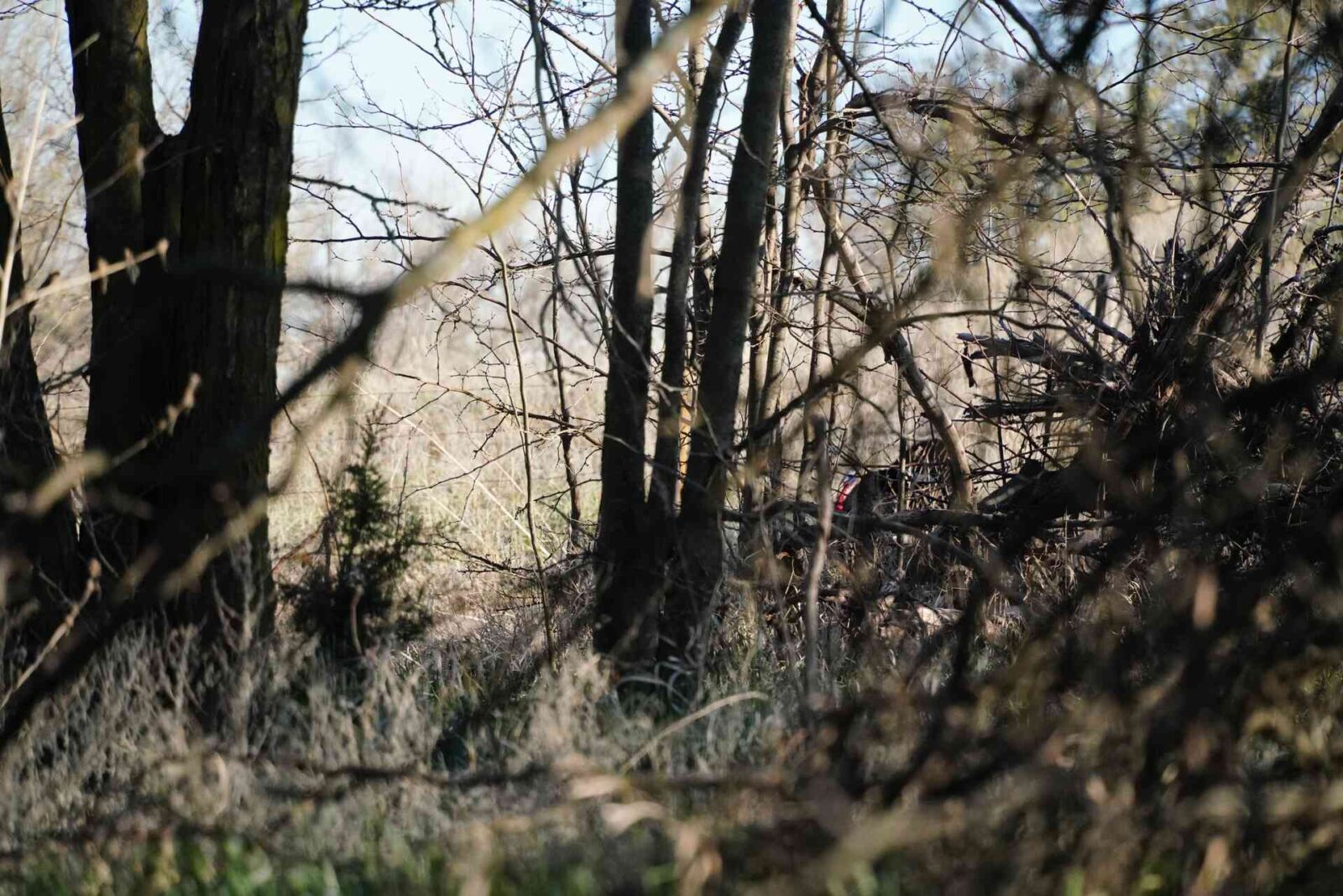
As is so often the case, they went toward the damn road. I wasted no time to bail on my setup location and using onX to pinpoint their gobbles once on the ground, it was clear they were in a low ditch inside the timber and headed toward the road. I racked my shell out of the chamber and started sprinting down the fenceline of the public/private border and didn’t stop until about 500 yards later when I was standing on the dirt road.
The birds sounded off unabated. With plenty of small rolling hills and ditches in this small block of timber, I closed the distance quickly, ending the stalk with a 15-yard belly crawl, as I could see tail fans pop in and out of strut. I made it to a mature oak, eased to my knees and there were three gobblers at 45 yards. I wasted no time. I clucked with my diaphragm, the far right bird pulled out of strut and I pulled the trigger. Just two hours later and a hundred yards up the hill my dad capped off our quest for Kansas Rios.
April 27, Montana Merriam’s
One of the absolute best parts of turkey hunting for me is waking up with the earth, as so much new life is blossoming. Because of this, I make it a priority to hunt a few weekday mornings every week of turkey season, and this Tuesday just happened to start far better than most. I’d won “lottery” access to a Block Management Area I found within onX Hunt. Block Management is Montana’s private land opened for public hunting. Many states have these and can be found within onX Hunt. Not a single gobble broke the silence in the dark, but I’d known there to be birds in the area and just picked a tree on the edge of a large stubble wheat field.
Sure enough, well after daybreak a bird sounds off across the field. I brought my strutter decoy with me, which when hunting in Montana I rarely do, but at this point, I crawled my decoy out about ten yards and then butt-scooted back to my tree. After watching what turned out to be two gobblers, two jakes, and a plethora of hens for almost two hours, the clearly subordinate gobbler pulled away from the flock and marched 200 yards clear across the field right to my lap and I pulled the trigger at 17 steps. Why after two hours of looking at my decoy did he become worked up at that moment I’m not quite sure, you just never know what they might do.
May 20, Wisconsin Eastern
For the past couple of years, my brother and I have done an annual turkey hunt. He has two young boys, so it’s great to get home and see some family while chasing birds. Typically we hunt public ground, and if we can’t find workable birds we begin knocking on doors and seeing if we can drum up permission. This year was no different and we ended up really struggling to get on a public land gobbler, not shocking given the Wisconsin season had been open for a month up to this point.
We began seeking permission and it was tough sledding at first, but it only takes one “yes” to turn things around and on day five I got the nod. We’d had some close calls in the five days of hunting up to this point, multiple birds hanging up between 70-90 yards, picking the wrong spots off the roost as always, just typical late-May turkey things.
It had been raining all day, I had my laptop with a powerbank in a pop-up blind situated on a wooded peninsula that jutted way out into a large cornfield. I was committed to doing whatever it took to get my Eastern. I’d been planted there since about 9 a.m., and it was now about 3 p.m. I’d just hopped off the phone with my boss, Zach. He said something to the effect of, “Well, you best go find one, your time is running thin.” I took that as an order to quit doing the mediocre work I was doing from inside my dry blind and take a wander on this newly gained permission.
It was a 300-acre farm, so I had some room to roam. In the steady rain, I moved slowly for a few hundred yards then would sit and call for 15 or 20 minutes. I swore I heard a very faint, distant gobble on my third setup, so with nothing to lose, I closed the distance. A few hundred yards later I came to a big power line. I snuck to the edge and immediately spotted a red head a few hundred yards down the power line lane. Without even confirming it was a longbeard, I pulled out the Hunt App and visualized where I needed to move to get in front of them.
Five minutes and a few hundred yards later, I snuck up an embankment on the edge of the cover and peered out from behind a tree. Nothing. I scanned patiently for a few minutes when all of a sudden, bloop, bloop, bloop—red heads started popping up everywhere. Seven gobblers in total. What was likely just a couple minutes felt like an eternity for them to close the distance from 60 to 40 yards, but as soon as I had a shot I wasted no time and completed my Single Season Grand Slam with my Eastern.